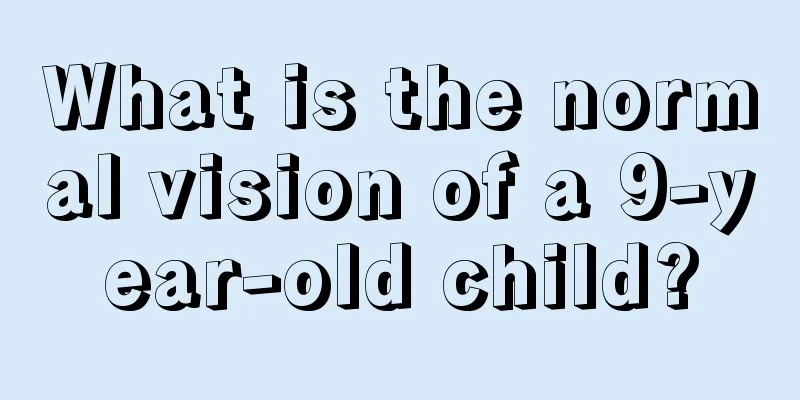What is the normal vision of a 9-year-old child?

|
Everyone hopes that their children's eyesight will always be normal, but we often see that many children start wearing glasses when they are still young and begin to show signs of myopia. At each stage, children's vision has a range. As long as it is within this range, the child's vision will be fine and he or she does not need to wear glasses. So, what is the normal vision for a 9-year-old child?
1. Newborn babies are in a state of farsightedness. When a baby is just born, his eyeballs are small and he is in a state of farsightedness. As age increases, the eyeball grows larger, approaching the normal adult size at around 6 years old and becoming emmetropia (neither farsighted nor nearsighted). The visual acuity of the emmetropic eye should be 1.0. As children start going to school, the time they spend reading at close range increases, and they may begin to develop myopia. Therefore, children's vision development is a changing process and they cannot reach the normal adult level from the beginning. 2. What is considered normal vision for children? When a child is just born, he or she is generally in a hyperopic refractive state of 2.0 to 4.0D. Later, as the infant grows and develops, the eyeball becomes larger, the eye axis becomes longer, the corneal curvature increases, and gradually develops towards emmetropia. Different standards should be used to judge whether the vision of children of different ages is abnormal. Generally speaking, the lower limit of normal vision for 3-year-old children is 0.4; the lower limit of normal vision for children aged 4 to 5 is 0.5; the lower limit of normal vision for children aged 6 to 7 and above is 0.7; and the vision of children aged 8 to 9 should be above 1.0. If a child's vision is lower than the normal lower limit of children of the same age, or the difference between the vision of both eyes exceeds 2 lines, it means that there is something wrong with the child's vision and he should go to a professional ophthalmology hospital for examination in time.How harmful are electronic products to children's eyesight? 1. After playing with iPhone for 20 minutes, the children's vision dropped to 43.8 degrees of myopia on average, the tear film rupture time was 5.3 seconds on average, and they blinked 7.67 times per minute on average; 2. After playing iPad for 20 minutes, the children's vision dropped to 41.7 degrees of myopia on average, the tear film rupture time was 5 seconds on average, and they blinked 4.67 times per minute on average; 3. When children watched LCD TV for 20 minutes continuously, their vision dropped to an average of 18.8 degrees of myopia, the tear film rupture time was an average of 6.7 seconds, and they blinked an average of 9 times per minute.
To prevent myopia, the time children use electronic products should be limited to 30 minutes each time. How to help children maintain good eyesight? 1. Limit the time of using electronic products; 2. Parents should set an example by using less electronic products; 3. Divert attention and spend more time with your children; 4. Participate in more outdoor activities; 5. Eat a balanced diet, eat more fresh fruits and vegetables, and eat less sweets and fast food. |
<<: How to know if the baby has a fish bone stuck in his throat
>>: What is the normal vision of children?
Recommend
Why does my baby keep sneezing recently?
Sneezing is a very common problem in life. Becaus...
Baby has fever and body shaking
When a baby has a high fever, he or she will trem...
What to do if your newborn is easily frightened
After a newborn is frightened, you must call out ...
Can children have massage?
Many parents think that their babies are not suit...
Can amblyopia in children be cured?
Amblyopia is a relatively common eye disease, and...
Can children eat cicadas?
There are a lot of cicadas in summer, they can be...
What to do if a child has a cold spleen and stomach?
Children have poor immunity, so many children alw...
How can students stay up late to refresh their minds?
The lamps are lit at midnight and the rooster cro...
Can children eat peach gum?
Peach gum can have a beautifying and skin-nourish...
What should I do if my baby is short?
During the baby's growth and development, man...
What is the reason why children have fever and vomiting?
Fever in children is very harmful. If accompanied...
What is the difference between childhood loneliness and autism?
Although early detection of autism is sometimes m...
What to do if a 12-year-old girl is too fat
If a 12-year-old girl is too fat, it is often rel...
Is it good to use enema for children’s constipation?
Constipation is a disease that generally occurs i...
What is the reason why children always urinate?
Due to many bad living habits, some adults have f...









